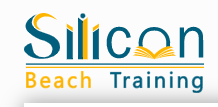Salesforce is the most popular cloud computing platform used in the world. Master the core administration features of Salesforce with our two day Salesforce Admin 201 Certification training program.
The course enables the delegates to configure and manage Sales and Service Clouds, configure user interface and implement automation, data validation, debugging and security.
The course is beneficial for delegates who are responsible for creating and maintaining Salesforce platforms in an organisation. During the Salesforce training, the delegates will learn how to configure and manage a wide range of important features and functionality of Salesforce.
Get to know about Cloud computing concepts, benefits of Force.com, Standard and Custom Objects, SAAS, PAAS, IAAS and more.
Prerequisites
No specific pre-requisites are required for attending the Salesforce Certification training. However, any working knowledge as a functional consultant, an administrator or a developer would be beneficial.
Course Objectives
- Understand the Data model and Security model
- Master Sales Cloud and Service Cloud modules
- Differentiate the building blocks of Salesforce
- Understand Salesforce1, SalesforceA, Chatter and Social features
- Describe Business process automation options
Outline
Introduction To Cloud Computing And SFDC
- Service and Deployment models in the Cloud
- Market situation
- Cloud Ownership
- Introduction to SF1 and Force.com Platform
- Declarative & Programmatic Options in Force.com
- Meta-data Driven Architecture
- Multi-tenant
- Business and IT benefits
- Use of SF1
Building Blocks Of Force.com Platform And Overview Of Student Master App
- Sign-up for a Free Environment / Org
- Adding company logo
- Benefits of System overview
- Salesforce Key Building Blocks
- Editions and Different Environments Available
- MVC Pattern
- Student App
- Student App Master Basic Data Model
- Student Master and Marks/Grades
- Student Master Basic Security Model
- Student Master Reports
- Student Master Application Scope
SFDC Data Model, Objects, Relationships And Fields
- Create Custom Objects and understand various properties in the Object definition section
- Customize standard objects
- Field and Data Types
- Custom Field Prosperities
- Field Dependencies
- Types of Relationship Fields
- Search Layouts
SFDC Security Model Org-Level General Administrative Features And Object Level Features
- Security Model Mind Map
- System Level or Org Level Security
- User Administration and Troubleshooting
- Permission Sets
- Profile and Permissions Sets
- Password Policy
- IP Address security
- Login hours
- Session settings
- Activations
- Page layout assignment
- Tab setting
- Field level security
SFDC Security Model Object, Record And Field Level Features
- Security Model Mind Map
- Record Level and Object Level
- Organization wide defaults
- Organization wide defaults – Student App
- Role and Role Hierarchy
- Criteria Based Sharing
- Different ways to gain Record Level Access
- Public Group
- Queue
- Public group Vs Queue
Business Logic
- Business Logic Mind Map
- Different Options to Implement Business Logic
- Functions
- Formula
- Validation Rules
- Rollup Summary Fields
- Record Types and Page Layouts
Business Process Automation
- Business Process Automation
- Business Requirements – Workflow Rules
- Workflow - Actions (Time When Action Takes Place)
- Workflow – Actions
- Workflow – Considerations
- Approvals – Introduction
- Approvals - How to Create A Process
- Approvals - Actions
- Approvals - How and What Can Approvers Do
Introduction To Sales Cloud
- Sales Cloud
- Sales Process
- Sales Productivity Features
- Lead Management
- Lead auto response
- Lead assignment
- Web to lead
- Accounts and Contacts Management
- Opportunities
- Campaign Management
- Price Book, Products, Price Book Entries
Introduction To Service Cloud
- Service Cloud
- Case Management
- Typical Service and Support Process
- Automation - Web2Case and Auto-Response
- Automation - Email2Case
- Automation - Assignment Rules
- Automation - Escalation Rules
- Email Templates in Case Management
- Channels
- Case Resolution – Solutions
- Case Resolution Using Knowledge
- Communities Basics
- Communities Setup and Administration
- Communities – Ideas and Answers
Data Handling And Processing
- Data Handling and Processing Overview
- Exporting data and Regular Backup
- External ID and Unique Fields
- Import
- Install Apex Data loader
- Use the Import Wizard and Data Loader and compare the features, Update, Upsert operations, Delete and Hard Delete records,
- Transfer record ownership
Reports And Dashboards
- Execute a report with and without modifications
- Create a tabular report, summary and matrix report
- Report and Security
- Report Builder and Standard Reports Available
- Add a chart and few other features like highlighting
- Create a custom report type and store in a folder
- User filters in reports
- Create a dashboard
- Bucket field
- Tabular Report significance
- Summary report significance
- Matrix report significance
- Joined report significance
- Dynamic dashboard
Salesforce 1, Lightning App Builder, Salesforce A, Outlook
- Customizable parts of the SF1 app
- Security and customizable settings
- Navigation menu
- Compact layouts and Mobile cards
- Basic admin activities on Salesforce A
- Outlook and SF synch up
Activity Management, AppExchange, Content And Folder Management
- Activity management - Tasks, Events and Open activities
- Creating and tracking tasks and events
- Folders and Document templates
- AppExchange
Chatter, Global Action And Publisher Layouts
- Chatter groups, feeds, people
- Files, Follow records, people
- Groups Topics and Files
- Global action types-Create
- Log a call, Custom VF page
- Custom canvas, Publisher layout
- Global an Object specific actions
